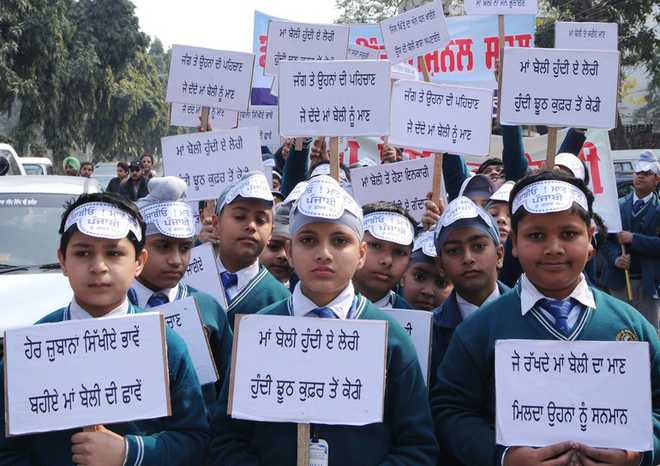Neha Saini
Tribune News Service
Amritsar, February 2
Kavishri, for the uninitiated in Punjabi culture, is a style of folk song where artistes perform energetic and dynamic capella singing, without instrumental music. It originated in the Malwa region of Punjab and is now considered one of the dying folk art forms of India. Until a promising attempt to make it visible on a larger platform was made by theatre director Rajendra Singh.
His latest Punjabi production based on William Shakespeare’s “A Midsummer Night’s Dream”, “Agad Akhara”, used folk arts forms, like Kavishri and Bhaand Marasiis as a storytelling tool rather than using digital advancements. The attempt was duly appreciated by the audience though for young theatre lovers, it was an education in Punjabi traditions and heritage. Of late, there has been a debate amongst Punjabi scholars and culture promoters about the neglectful attitude of youth toward Punjabi culture and heritage, especially in performing arts and literature. While grooming global generations, some of the cultural traditions seem to have been lost or forgotten and are now at the mercy of some independent and community initiative like Rajendra’s to hang on to.
The third edition of Indian Folklore Research Academy’s Maa Boli Divas will be held this month and celebrates Punjabi language in all its forms, indulges students and youth in various activities to educate them and encourage them to endorse the language. Similarly, several groups of artistes in the city are promoting the community living practices in Preet Nagar, a heritage village in the city. While all these attempts are consistent in their approach, the fact remains that there is a lot to be done to promote respect for culturally significant practices and art forms.
“We need to concentrate on encouraging youth to respect our traditions, educate them about their significance. For instance, encourage children to speak in Punjabi or read Punjabi literature instead of neglecting the mother tongue,” says Parminderjit Singh, Punjabi poet and editor of “Akhar” magazine. He is among the scholars in the city to initiate Maa Boli Divas celebrations to promote Punjabi language. Parminderjit says that ‘outsiders’ have more respect for Punjabi language and culture than most among us. “I know a fellow scholar from Karnataka, who works a lecturer in government college in Chandigarh and he speaks better Punjabi than most of our young Punjabis.”
Rajendra Singh, a National School of Drama passout, too, believes that revival of folk art forms is important to keep alive the essence of our community and individuality. “Today Punjabi music is more about pop rock, rap and certain brands. But what happens to Bhaands, Sammi, Vaar, Kavishri and other dying folk art forms that form the basis of our social and aesthetic being. My purpose is to revive and educate more youngsters about the rich heritage of our past and carry it to the future as well,” he says.
Acknowledging the efforts to promote cultural activities, schools, too, are now actively joining in this culture education. “Cultural vibrancy and co-existence, the two important aspects of any community, will result in better functioning of society. Some of the biggest multi-cultural societies of the world are rich culture colonies as well. And we should equip our future generations with their strong sense of culture identification and heritage while we prepare them for a global living,” says Manpreet Kaur Kochar, an independent documentary maker from the city, who had made a documentary on Preet Nagar community living for school students.
Unlock Exclusive Insights with The Tribune Premium
Take your experience further with Premium access.
Thought-provoking Opinions, Expert Analysis, In-depth Insights and other Member Only Benefits
Already a Member? Sign In Now










